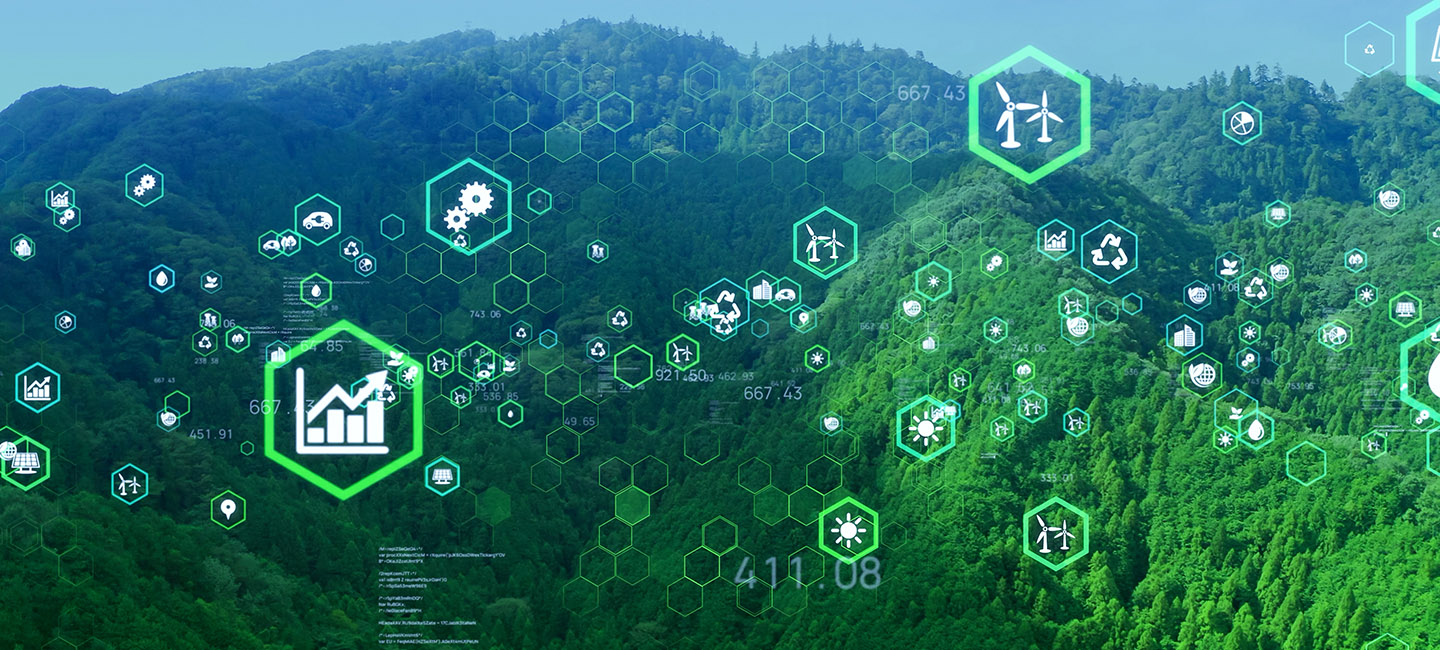What are your organization’s plans for Earth Day 2021?
When you think of carbon emissions within your financial institution (FI), you probably think about your buildings, cooling and heating methods, power and paper consumption, energy mix, vehicle fleets etc. Then you might look at emissions, from IT and data center operations where you’re likely harnessing the power of external clouds run by organizations that commit to carbon-neutral operations.
But what about your ATM network? ATMs are the most efficient way to manage cash, and they’re broadly in use. On the flip side, the operations component necessary to keep your ATM network up and running throughout each terminal’s lifecycle makes up around 80%
1 of all the emissions generated during the lifetime of an ATM.
This year for Earth Day, let’s take a closer look at how your organization can reduce emissions from your branch and self-service network environment. A simple analogy we like to use is trees: Just as a healthy forest absorbs CO2, reducing emissions for the planet, so too the decisions you can make to help reduce the emissions your organization generates.
It’s Time to Develop a More Strategic Plan to Eco-Charge Your Operations
Our latest infographic outlines five ways financial institutions (FIs) can reduce emissions:
1. Optimize Your Branches’ Physical Footprint
Traditional banking branches are typically wide open spaced–and could withstand footprint reductions. These buildings, storefronts, office spaces and branch lobbies are all carbon-emission offenders. At an average 102 kg CO2 emissions per square meter
2, reducing just one branch from 300 square meters to 200 square meters could reduce carbon emissions by more than 10 tons each year.
Footprint reductions across your entire branch network can be based on different opportunities and strategies:
Smaller branch formats with cashless or tellerless concepts that offer new ways to rethink the branch network and consumer approach are already implemented to different degrees at many FIs worldwide.
Beside closing branches, you can realize the most consequential footprint reduction with an “ATM as the branch” strategy. In areas where a full branch doesn’t make sense, a modern self-service terminal with enhanced functionality can take the place of a traditional teller, providing everything from cash in/cash out to bill pay, money transfers and other complex transactions, perhaps with additional remote services via full-service video capabilities.
2. Reduce Power Consumption
Self-service systems are available 24/7—and with the “always on” role comes “always on” power consumption. When is the last time you thoroughly evaluated your self-service network’s energy consumption levels? Older terminals and underutilized ATMs could be inordinately affecting your overall energy consumption.
Newer ATMs use technology that requires less energy through LEDs, ambient light sensing, and more efficient modules with smarter power supplies and electronics. These modern features allow the ATM to maintain a lower operating and idle power consumption. For example,
our latest technology in DN Series™ offer a power saving rate of at least 30%, and up 60%, compared to traditional ATMs
3. And, do you have installation sites in a shopping mall or a branch vestibule that are closed during the night? With the option of “Green Self-Service” you can implement automated shutdowns during closing hours and realize additional power savings. In a 300-ATM network, power savings of 687 kWh per year per system can end up saving the same emissions that 4,070 trees can absorb.
3. Reduce CIT visits through automation and cash management
Easy access to cash—anywhere, anytime around the world, is an essential service for banks to offer consumers. But cash, holds hidden efforts and costs, including transport and handling. Cash automation is absolutely necessary in the battle to reduce the impact on the environment. End-to-end optimization of cash processes can reduce a bank’s footprint and also help FIs realize up to a 75% reduction in cash replenishment efforts—which means direct savings in CO2 emissions from fewer cash-in-transit (CIT) visits.
Migrating your customers to recycling ATMs creates a closed loop cycle in which your own customers—often small- and medium-business owners who are conducting their night drops—are replenishing your ATMs for free and consumers can withdraw the same money. Based on concrete cash flow data of a retail bank, a reduction of 75%
4 in cash replenishments can be realized through the use of cash recycling technology. When ATMs with recycling technology replace standard cash-out ATMs and deposit solutions for cash-in transactions, you can see 150 fewer CIT visits yearly
5. Based on average emissions of CIT visits 1,700 kg CO2 can be saved per ATM per year.
4. Increase Remote and Automated Capabilities
What happens when an ATM goes down in your network? Sometimes, the path to uptime can be unnecessarily long and winding. Perhaps your branch staff examines the terminal or maybe a call for a first-line maintenance request is placed. A service tech may even come out to fix the ATM, and discovers they don’t have the right tool or part to complete the fix. Shortening and straightening that path reduces energy consumption, with fewer unnecessary service tech visits, higher remote resolution rates, higher first-time fix rates and higher call avoidance.
IoT-enabled ATMs with DN AllConnect ServicesSM facilitate faster, more seamless fixes, as service experts can proactively address ATM issues at the individual terminal level using information generated from aggregate fleet data. In 2019, for example, the increased use of IoT in the U.S. enabled us to reduce on-site ATM visits by 60,000, which led to the reduction of 1,500 tons of CO2 emissions—63,000 trees in our forest metaphor.
5. Implement New Technology that Enables Long-Term Sustainability
Cash-recycling technology has been around for decades. But now that technology can be combined with new innovations in self-service terminal design to unlock even more savings, whether your organization is ready right away, or down the road. Recycling technology is built into every DN Series terminal and can be turned on or off through a simple software update—giving you the flexibility to manage your fleet more nimbly and seamlessly. This flexibility and future-readiness reaps big returns over the long term, lengthening the lifecycle of your ATM.
Additional new technology inside DN Series delivers even more contributions to a positive environmental impact:
Larger cash capacity lengthens CIT intervals.
Improved design such as optimized note path increases reliability and lower the average number of yearly interventions per system.
Advanced retract capabilities lower or even eliminate interventions needed when customers forget to take their money.
The opportunity of in-branch recycling can further reduce CIT stops when cassettes are interchanged between systems in one location. Cash management solutions and integrated services support can help you optimize your branch and self-service network while balancing and minimizing CIT costs and interest rates, depending on the individual cash flow. If you measure all these benefits and their related savings in carbon emissions in comparison to a traditional recycler you end up with the same impact that more than 10,000 trees would make in reducing emissions.
Where does your FI stack up against these five action plans? Whether you’re already making headway, or you’re not sure where to begin, we can help ensure you’re asking the right questions and implementing the right strategy to drive efficiencies, and ultimately reduce your impact on the environment.
Listen to our recent webinar replays to learn more hosted in English and French.
1 Diebold Nixdorf Carbon Footprint Analysis
2 Carbon emissions data for commercial buildings http://css.umich.edu/factsheets/commercial-buildings-factsheet
3 Depending on ATM types and configuration
4 Based on a US-based retail bank replacing deposit solutions with cash recycling
5 Based on individual cash flow scenario and configurations




